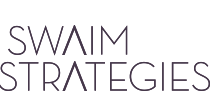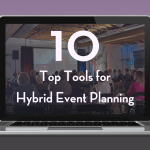Nonprofit Events with a Small Staff: Takeaways from Swaim Strategies’ Educational Panel with NXUnite
Samantha Swaim, Founder and Fundraising Event Consultant at Swaim Strategies, joined NXUnite’s “Getting the Job Done: Nonprofit Events with a Small Staff” with nonprofit professionals Geng Wang, Chief Executive Officer and Co-Founder of Civic Champs, and Jessica Payne, Founder of Mockingbird Analytics, to discuss the most effective strategies when it comes to operating with a small staff.
Preparing for an Upcoming Event
Hosting an event is a great way to generate attention. A lot of organizations host events because they offer a powerful way to gather people around missions, strengthen relationships and gather new donors. To make the most lasting impact, events should relate back to what your organization’s mission stands for.
“The day of the event is a great opportunity to build relationships with the people attending the events, including your donors. Volunteers can also become donors”, said Geng Wang, CEO and Co-Founder of Civic Champs.
Whether planning an in-person, hybrid or virtual event, every organization and its staff need an appropriate amount of time to market the event and plan what physical resources are needed for it. The next time your organization is getting ready to plan its next event, remember two things: have a plan and have a place.
Increasing Your Staff’s Capabilities
There are many factors that can affect an organization’s capabilities and efficiency when it comes to handling projects and day-to-day operations. With the advancement of technology, increasing your staff’s capabilities has become significantly easier than it was previously.
Technology has affected many areas within organizations and businesses alike, including:
- Communication Methods
- Marketing Strategies
- Accessibility Reach
- Management Capabilities
“Using technology for things such as virtual and hybrid events enables more accessibility and less restriction on who can attend. It’s increasing the capacity of reach for all events”, said Samantha Swaim, Founder of Swaim Strategies.
Today’s digital tools and advancements that are being offered can be incredibly impactful for individuals and organizations working within the event sector. As technology continues to advance, it’s especially important that every staff member, regardless of their title or job task, works to level up their technology skills.
Setting Your Small Staff Up for Success
Having a small staff doesn’t mean an organization’s capabilities or chances for success have to be limited. First and foremost, nonprofit organizations should prioritize making a plan. It’s important for a nonprofit to have a clear direction of what it wants to achieve, its goals and things it wants to avoid.
“Pick one of two things and do them really well. Do not try to throw everything all into one because you think it will engage more people”, said Jessica Payne, Founder of Mockingbird Analytics.
The next time your small staff is planning an event, consider the following points:
- Have conversations: While you’re planning your event, it’s important to have conversations with corporations and donors that contribute to what your organization’s long term success looks like.
- Leverage volunteers: Think about how you can set up your volunteers for success. Understand their needs and expectations. When you know how to meet your volunteers’ needs, they can better meet yours.
- Lean on your board: Not enough people lean on their boards for bringing in potential donations. Learn what events your board wants to be involved in and incorporate ways, such as confidential surveys, to get everyone’s opinion.
Looking ahead
Regardless of how many staff members or volunteers your organization has, event planning doesn’t have to be difficult. There are multiple resources available, such as nonprofit webinars, podcasts and new technologies that can aid your organization’s planning efforts. Lastly, remember to leverage the people within your network who can provide key insights on event planning tactics.






